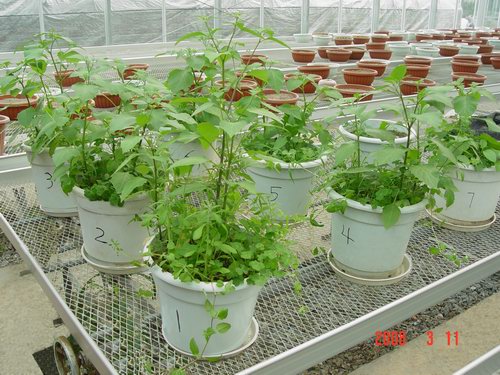South China Botanical Garden Finds a New Hyperaccumulator for Cd Phytoremediation
Phytoremediation is a promising clean-up technology, which is to remedy soil heavy metal pollution with plants. The key to success of this technique is to find hyperaccumulators which can accumulate uniquely high quantities of heavy metals, for example, more than 1000 mg kg-1 for As, Pb, Cu, Ni, and Co, 10,000 mg kg-1 for Zn and Mn, and 100 mg kg-1 for Cd in plant shoots. Though over 400 hyperaccumulators have been found worldwide so far, the species that can be utilized for the purpose are quite limited in practice due to small biomass, slow growth, poor resistance, lack of seeds or competitiveness with local plants. Therefore, it is necessary to look for efficient methods to identify new hyperaccumulators.
ZHANG Xingfeng, the Ph.D candidate of soil ecology and ecological engineering group, South China Botanical Garden, under the guidance of Prof. XIA Hanping, used a new method, soil seed bank-metal concentration gradient method to screen for heavy metal hyperaccumulators. As a result they found that Solanum photeinocarpum was a potential Cd-hyperaccumulator. Their experiment and analysis indicated that the shoot biomass of S. photeinocarpum showed no significant reduction with soil Cd treatment as high as 100 mg kg-1. In the seed bank-Cd concentration gradient experiment, plant tissues accumulated 544, 132, and 158 mg kg-1 Cd in roots, stems, and leaves at 100 mg kg-1 Cd in soil, respectively. In the transplanting-Cd concentration gradient experiment, plant shoot biomass was unaffected by soil Cd as high as 60 mg kg-1. Plant tissues accumulated 473, 215 and 251 mg kg-1 Cd in roots, stems, and leaves at 60 mg kg-1 soil Cd, respectively. Obviouly, it could be affirmed that S. photeinocarpum is a hyperaccumulator for removal of Cd contamination.
These results were published recently in the famous journal in the field of environmental engineering, Journal of Hazardous Materials (2011, 189: 414–419).

Plants for different treatments in the soil seed bank-metal accumulators screening experiment (65 days after the heavy metal solution added to the soil). The numbers marked on each pot represent different treatments. The highest plant in each pot is S. photeinocarpum.
File Download: